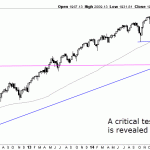Contributing Authors: Zach Mitchell, John Freeman
Snap Inc (NYSE:SNAP) closed yesterday’s trading session at $24.48, +44%, vs. its initial pricing of $17, concluding the most anticipated tech IPO since Alibaba’s in September 2014. +44% on opening day is great, but it’s worth noting that the opening trade took place at $24.00, and stayed within a range of $23.50 – $26.05. Today, SNAP closed at $27.07, up +10.6%.
The $27.07 share price gives SNAP an impressive (we might say overvalued) $31.3b market cap — about 2.5x the value of Twitter, and greater than the $26b Microsoft paid to acquire LinkedIn last December. To be fair, however, we consider TWTR a bit overvalued as well, and believe the best mechanism for TWTR to realize shareholder value is through an acquisition.
SNAP’s small float — estimated around 12.8% of total shares outstanding — played a significant role in facilitating the large initial jump at the open that persevered all day. The underwriters did a phenomenal job of: 1) ensuring demand, 2) minimizing volatility, and 3) earning healthy commissions.
In the wake of the IPO, it has been reported that NBCUniversal, owned by Comcast (CMCSA), is reported (by CNBC, which is also owned by CMCSA) to have taken a $500m position in SNAP through the IPO, with a pledge to hold the shares at least one year. Other strategic investors in SNAP include Alibaba and Tencent. NBCUniversal has history with SNAP, particularly in the area of reworked content for delivery through Snapchat.
The dynamics behind large IPO allocations are always interesting, and we look forward to SEC filings including SNAP’s 10-Q and high-profile 13-Fs to see who else besides NBC has put their money on yellow.
From a Street perspective, coverage is about as expected:
So, where does yesterday’s IPO place SNAP relative to its closest peer in the social networking space? (We’re not convinced SNAP is a camera company as they claim.)

Comparing Market Cap to Revenue for SNAP and Facebook highlights one of our concerns with SNAP: valuation. SNAP’s 2016 revenue represents only 1.41% of its $28.4b post-IPO market cap. In comparison, FB’s 2016 revenue weighs in at 6.45% of its $400.7b market cap. Granted, FB is a considerably more mature, and diverse, firm than SNAP. But — and here’s the important part — they are both competing for a finite pool of advertising dollars for the younger generation of social users.
Despite SNAP’s strong IPO, we’ve got 8 good reasons why we’re not biting on SNAP:
1) Demographic Challenges. We love the stickiness factor of Snapchat, and its solid grip on its target demographic. But that grip is perhaps too tight. SNAP states that the majority of its users are in the 13-34 year old range. But how big is that pool, and how saturated is it today?
According to SNAP, around 36% of its daily average users in the US (its primary market today) are in the 18-24 year old demographic. Based on 69m North American daily average users, of which we estimate 62.1m are in the US, that works out to roughly 22.36m users between the ages of 18 and 24 – or 71% of the entire US population between those ages. That’s an incredibly high saturation rate, which means that advertising growth (in the US) has to primarily come from increased advertising spend per user, and not additional user growth.
Its second largest segment in the US is the 25-34 year old bracket, which accounts for 27% of its US user base. Moving to the up-and-coming bracket, 13-17 year olds, that only accounts for 22% of its US user base. Here’s the troubling part (for a firm that is primarily targeting the younger generation): the younger user in the US is a declining demographic.

2) Contextual Data. From a market perspective, we are cautious about the “private” nature of SNAP’s appeal and its focus on the millennial segment. SNAP’s initial selling point was its privacy: Users create and share personal moments that automatically disappear after they’ve been viewed. At the time, it was a singularly unique feature, and it appealed to those younger users who were looking at a way to communicate but potentially not remember (or be held accountable for) what they were sending to others. It was a more robust, and fun, form of Instant Messaging (SMS, Text, etc.).
But that privacy-first focus (as well as its “seven most important people” approach) also limits discovery within SNAP’s network. Finding new friends (and expanding the context-rich data available by an ever-growing social graph) is inherently more difficult than on other “open/public” social networks (such as TWTR and FB), and yields a far narrower range of advertising demographics. We feel this lack of discoverability (even as SNAP aggressively moves to expand its target demographic) is still a limiting factor on growth.













Leave A Comment